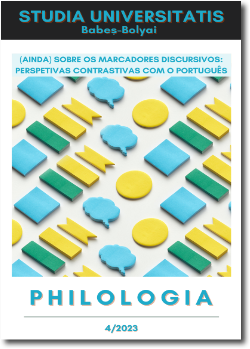PARAPHRASING IN ESAP: TEACHER-GUIDED, AI-ASSISTED OR COMMUNICATIVE ACTIVITIES
PARAPHRASING IN ESAP: TEACHER-GUIDED, AI-ASSISTED OR COMMUNICATIVE ACTIVITIES
Author(s): Adina-Maria MezeiSubject(s): Language acquisition
Published by: Studia Universitatis Babes-Bolyai
Keywords: paraphrasing; English for Specific Academic Purposes; English as a Second Language teaching; ESP teaching activities; artificial intelligence in education;
Summary/Abstract: Paraphrasing in ESAP: Teacher-Guided, AI-Assisted or Communicative Activities. At the heart of progress in academia lies the principle of building upon other people’s ideas, linguistic expressions and/or scientific endeavours by taking note of invariably crediting the original author (Mori 2018). One way of doing this is by the usage of paraphrasing. Though paraphrasing is regarded as the prerogative of successful academic thinking and writing, what it means exactly is still ambiguous to some extent. After undertaking to formulate some working definitions, we discuss paraphrasing techniques and activities in the context of teaching English for Specific Academic Purposes to students majoring in Biology. The activities considered are grouped into three main categories with respect to the procedure involved: teacher-guided (with a focus on certain parts of a sentence/text as selected by the teacher), AI-assisted (linked to the usage of automated paraphrasing tools) and communicative (tasks having a connection to real-world communicative needs). Some examples are discussed with the purpose of determining their appropriateness in a teaching context. The article sketches an initial paraphrasing teaching toolkit, developing mainly the first category, and ends with considerations regarding future research, such as the development and implementation of AI-assisted tasks and the analysis of inferential and rhetorical processes.
Journal: Studia Universitatis Babes-Bolyai - Philologia
- Issue Year: 68/2023
- Issue No: 4
- Page Range: 241-266
- Page Count: 26
- Language: English

